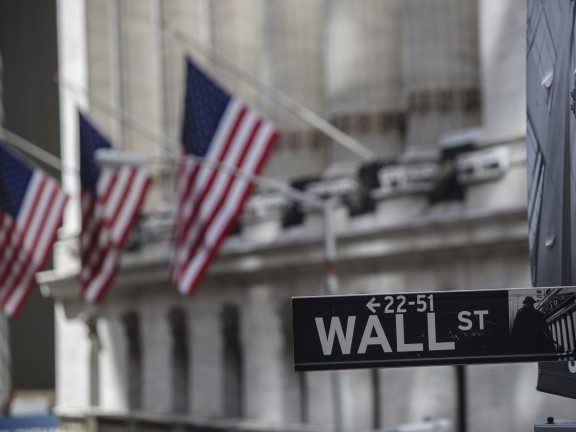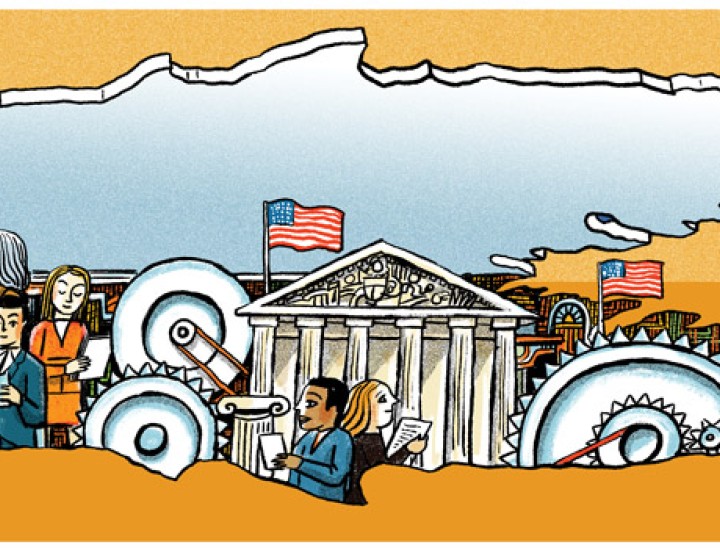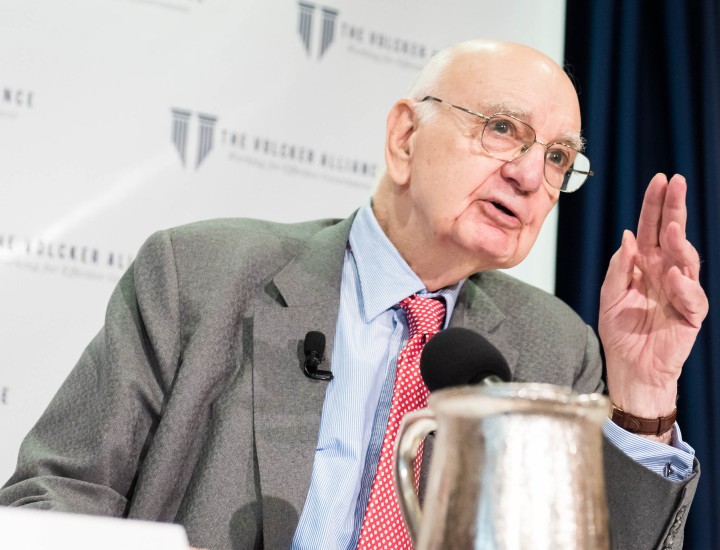New York Times Features Sheila Bair and Gaurav Vasisht Op-Ed on Growing Threats to Financial Stability

This article was originally published January 10, 2019 by The New York Times.
The momentum behind the American economy is strong. In 2018, unemployment hit its lowest rate in 49 years, 3.7 percent. Real wages were (finally) increasing and inflation remained muted. In 2019, growth is projected to slow but still remain above 2 percent.
Yet risks abound. The trade war and the escalating drama over the government shutdown threaten growth. Meanwhile, the Federal Reserve’s inaugural Financial Stability Report, an early warning system for the financial markets, recently highlighted the vulnerabilities created by investors who show a “high tolerance for risk-taking” in the market for corporate debt. The economy’s continued health will hinge on whether big Wall Street banks can withstand shocks caused by these or other threats and continue lending.
On this front, it is far from certain that banks and their regulators are prepared.
Years of low interest rates have brought about excessive business debt and elevated prices for corporate bonds. The corporate bond market has swelled to nearly $7 trillion. The debt owed by businesses as a percentage of gross domestic product is at a record high. But the credit quality of investment-grade bonds has deteriorated. Underwriting standards on “leveraged loans” to risky companies have eroded. And until recently, yields on junk debt remained low, a sign that investors are too willing to take on the risk of bonds held by companies with less-than-stellar credit.
These vulnerabilities can amplify shocks and create systemic disruptions. In a market downturn, widespread downgrades of corporate bonds could induce a sell-off, precipitating sharp declines in the price of bonds and feeding a cycle of further downgrades, margin calls and sell-offs. Highly leveraged corporations may have difficulty refinancing or getting more credit, increasing the risk of corporate defaults and bankruptcies.
Cracks are already forming. In December, borrowing in the high-yield bond market came to a standstill. Deals in the leveraged loan market are also delayed from a lack of interest from mutual funds and collateralized loan obligation managers, the largest buyers of leveraged loans. These events signal trouble ahead for highly indebted companies seeking more financing.
This instability raises a basic question: Are the big banks strong enough to handle it? The Fed seems to think they are. The banks are better capitalized than before the 2008 financial crisis, and stress tests show they can withstand steep declines in prices of assets that they hold. But the Fed may be overly optimistic.
Wall Street banks have significant exposure to corporate debt. They underwrite and make markets in corporate bonds, make leveraged loans, invest in collateralized loan obligations, extend credit to businesses, including highly leveraged hedge funds, and buy and sell protection on corporate debt in the credit default swap market.
In a crisis, these exposures could serve as a channel for contagion in a highly interconnected financial system dominated by large banks.
Yet bank stress tests don’t adequately capture this dynamic. Stress tests don’t consider how a firm’s response to a shock can reverberate. They also understate the effect of financial-sector distress on the economy. This helps explain why the tests have allowed bank capital to decline slightly despite elevated asset prices and increasingly stringent scenarios.
Stress tests also rely primarily on risk-based capital ratios, which vary based on the perceived riskiness of a bank’s assets. These ratios are routinely gamed and, as we learned in 2008, are a poor indicator of a firm’s financial health. A more credible yardstick is the supplementary leverage ratio, which is a simple cap on the percentage of a bank’s funding from debt. But based on recent remarks by senior Fed officials, its role in stress testing may be eliminated altogether.
To be sure, reforms put in place after the 2008 financial crisis have enhanced bank resilience. The eight global systemically important banks in the United States now abide by additional capital and liquidity requirements, including a surcharge intended to ensure they absorb the effects of their own failure without disrupting the broader economy. But here, too, there are deficiencies. In calculating the surcharge, the Fed relies on incomplete historical data that ignore losses that taxpayer bailouts averted in the last crisis. These deficiencies don’t inspire confidence.
Recessions that emerge from distress in the financial sector tend to run deeper and last longer than other recessions. As the former Federal Reserve Chairman Paul Volcker recently warned, the danger comes from “standing by while bubbles and excesses threaten financial markets.”
So far, regulators appear to be doing exactly that — or worse.
In recent months, regulators have proposed to reduce liquidity buffers of banks with as much as $700 billion in assets, dilute the strength and frequency of stress tests, water down the Volcker Rule prohibition on risky trading and cut leverage capital requirements for corporate derivatives exposures. Pressed by lobbyists and others, regulators are now contemplating a further weakening of the surcharge on the eight systemically important banks.
To prevent a repeat of 2008, regulators must look beyond the concerns of bank lobbyists. Instead of cutting capital to increase shareholder returns or making it easier to bail out giant financial institutions the next time around, regulators must address threats to the economy. This means requiring thicker capital cushions for the big banks and tighter leveraged loan underwriting standards. These steps would help secure a safer financial system and possibly avoid another crisis.
Sheila C. Bair was chairwoman of the Federal Deposit Insurance Corporation from 2006 to 2011 and is a founding director of the Volcker Alliance and the Systemic Risk Council. Gaurav Vasisht is the director of financial regulation at the Volcker Alliance.


